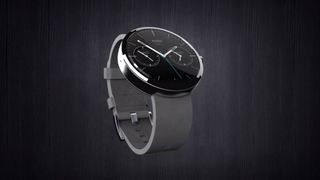The challenges wearable tech needs to overcome to succeed
ARM's looking to outmuscle the competiton
TRP: Can the design and physical shape of wearables affect the components that can be used inside? Most smartwatches have been square up until the Moto 360, the first circular one by a 'major' manufacturer to attract attention.
NH: There is an interplay, and that's not necessarily on the processor side but certainly on the graphics side. Most screens today for the smartphone business are rectangular and of a particular size.
I think that with wearables, we're going to see some more exotic shapes, more exocitic aspect ratios, curved flexible displays and types of display technology. Of course, that then has an effect on both the graphics processing and the associated software libraries.
Because now if we're looking at software resources, I'm now not dealing with an oblong shape, I'm dealing with different types of shapes, so my software now has to layout the data on different aspect ratios with different display screen technolgies.
So it does have an effect, but it's more on the graphics side. The processor doesn't care quite so much.

Speeding up
TRP: Has increased trajectory around wearables impacted ARM's time to market for its Cortex-M series CPUs?
NH: In terms of where we are today, we have a very broad processor portfolio all the way from Cortex-M0 to Cortex-M0+ processors to ones fractions of a grain of sand. They span all the way up to the latest 64-bit tablet processors. We have a good range in-between too.
Are you a pro? Subscribe to our newsletter
Sign up to the TechRadar Pro newsletter to get all the top news, opinion, features and guidance your business needs to succeed!
There are other elements looking forward, such as security and looking at how you secure the data, which is a key aspect to this marketplace. Do I see an increased cadence? I think there's a natural increase cadence, but wearables has a way to go until it gets as frantic as smartphones.
Everyone's bringing out new phones every six to nine months, but I don't expect wearables will change rapidly. We're confident we've got the entire processor range to be able to satisfy that change for a generation or two.

TRP: Let's switch angle - what potential do wearables hold for the healthcare industry? You said that blood pressure sensors are difficult to implement.
NH: Blood pressure has been a bit elusive. Sometimes in the medical field there are regulated areas for taking things like heart rates and so on - it's currently measured with a big cuff. if you could have a more unobtrusive way of measuring blood pressure, I think consumers as patients would go for it.
There's also an opportunity to better monitor patients using wearables, which means you can get patients out of hospitals and into homes, which has an advantage for the medical industry because it's expensive keeping people in hospitals.
Also, patients that spend time in hospital tend to say that the food's rubbish, they can't sleep and want to go home.
Check out our coverage of Qualcomm's Life at MWC 2014.
TRP: How quickly will wearables take off at the business end generally?
NH: You see it many times where people play around with technology in the consumer environment and then industry picks up on it. With Glass-like technology, for example, you can wander around and do stock takes hands free, that sort of thing.
I think it'll go down that route. When looking at other routes, it goes beyond wearables. Sensors in cars, for example, can affect your insurance depending on how you drive. There are lots of scenarios that will unfold over time.

An incredible $100 billion bet to get rid of Nvidia dependence — tech experts reckon Microsoft will build a million-server strong data center that will primarily use critical inhouse components

HP launched a very promising ultra portable XPS13 killer laptop — the 1kg EliteBook 635 Aero G11 is only available in Japan with seemingly no plans for a global launch, but why?
Most Popular


